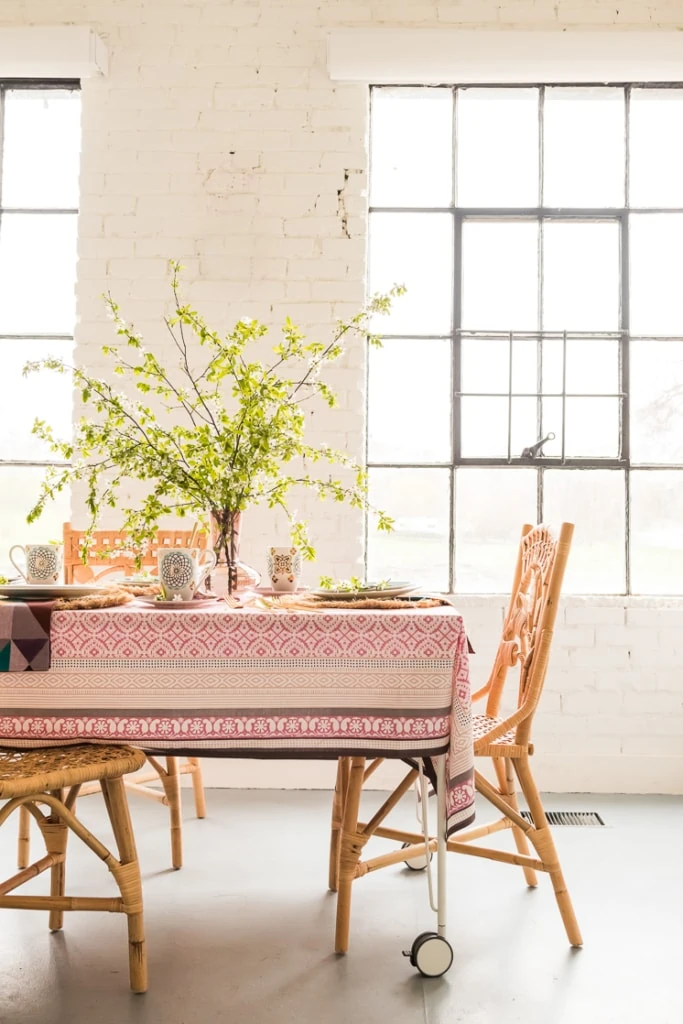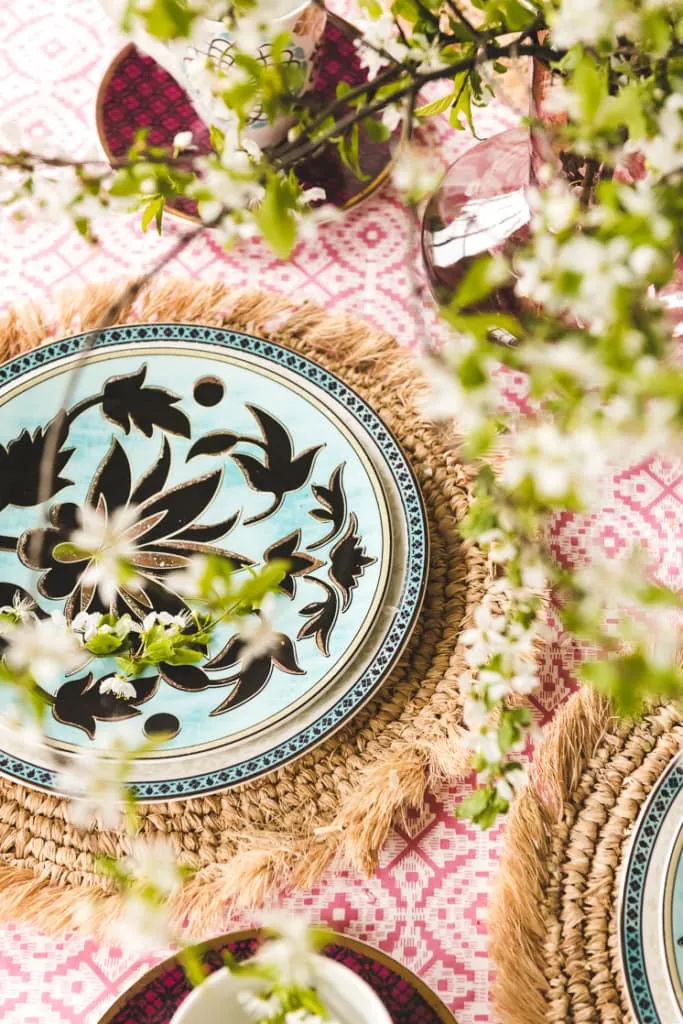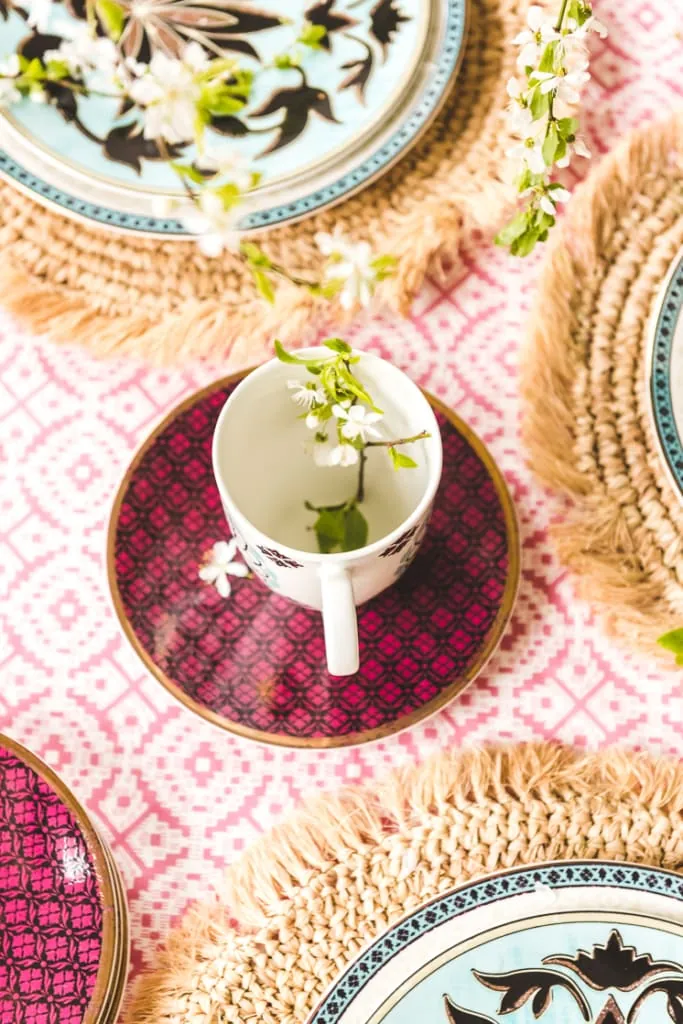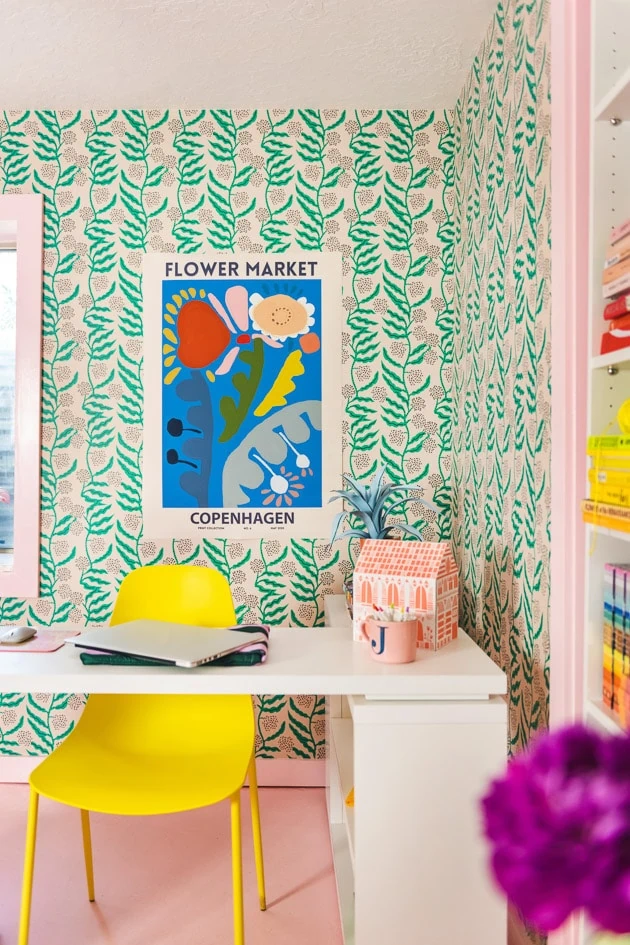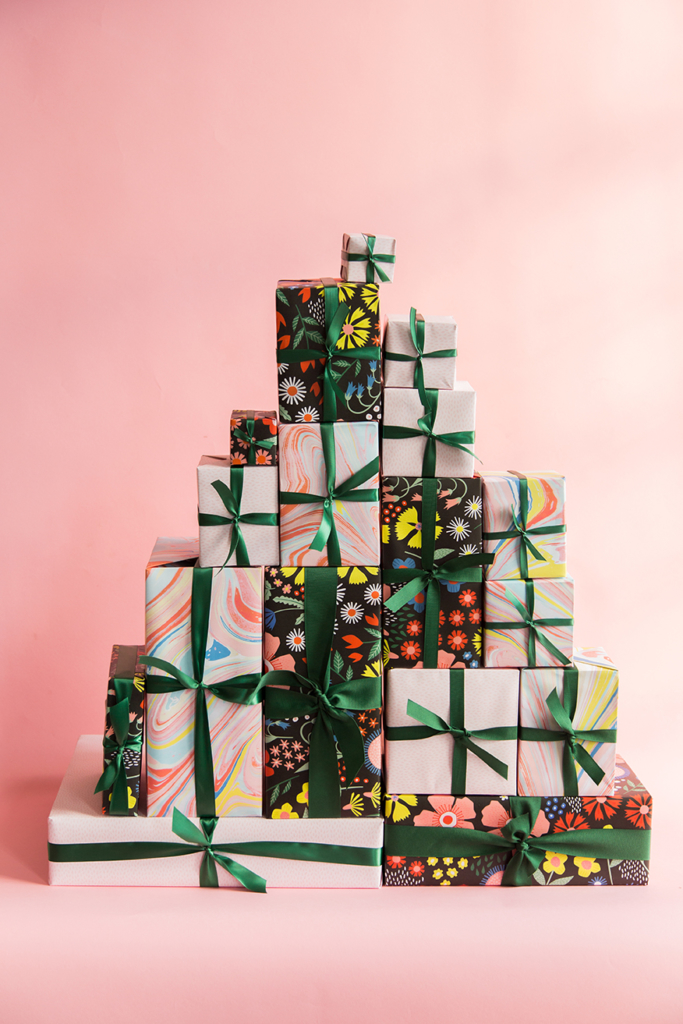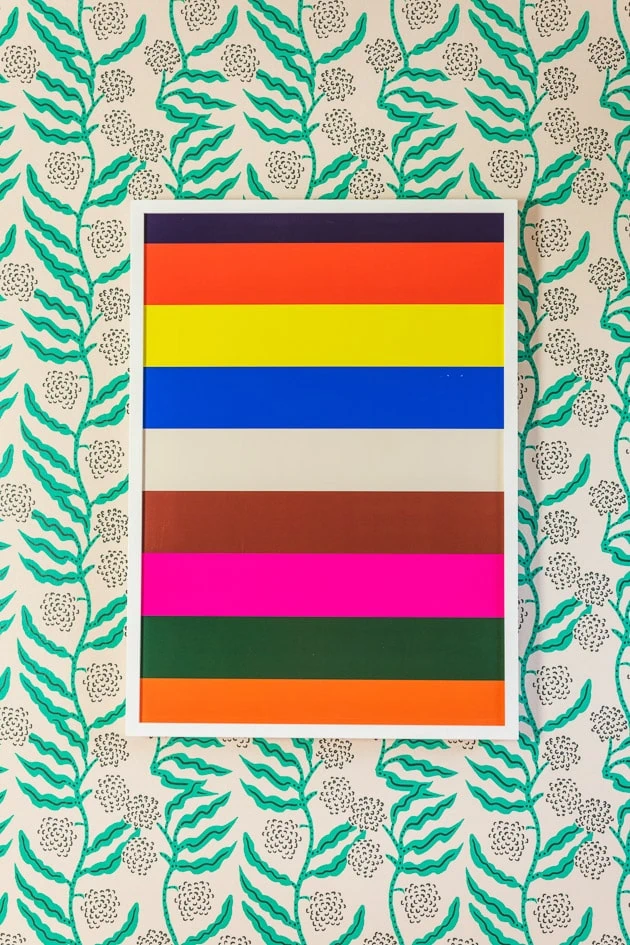Pattern mixing is very on-trend, but it’s not for the faint of heart! If you’re feeling intimidated by pattern mixing, you’re definitely not the only one. After all, it can get hectic!
One of my favorite things about design is how it can feel like play. And pattern mixing is a really fun playground! Combining colors, patterns, and shapes can be like alchemy–sometimes magic happens and two things together become much more than the sum of their parts! But you won’t feel that magic without a few missteps along the way. Don’t worry about making mistakes, though! Reevaluating your design is a big part of the process. Remember, design is play!
Still, I know how pervasive that inner critic can be. I wrote down my favorite 5 pattern mixing secrets so that you have a starting point. And once you’re confident with these tips, go wild! Design rules are meant to be broken.
Over the last few months I’ve done a lot of designing! From the upstairs bathroom (full remodel reveal coming soon!) to the downstairs office, I’ve spent quite a bit of time in front of a mood board. A big part of design is mixing patterns, and I know it can be daunting. There’s so much to consider and it’s not hard to cross the line from fabulous to overwhelming, especially with all the options available at places like Spoonflower! And there really are SO MANY great options at Spoonflower.
Whether you’re putting together a room or an outfit, you should know how to mix patterns. Here are some of my favorite pattern-mixing tips!
Color
Color is one of the very first things that you notice about any design. It’s immediate and impactful, and it stays in your brain. Think about it–if you go into a room you’re more likely to remember that the walls were green than the pattern on the curtains. It’s important to stick to a cohesive color scheme when you’re mixing patterns. Otherwise, things get really chaotic really fast!
Scale
Having a good blend of large and small patterns keeps your design visually interesting. Larger, more graphic patterns really stand out against smaller, delicate patterns. Meanwhile, some small patterns give a nice place for the eye to rest, which makes large and small pattern mixing a symbiotic situation.
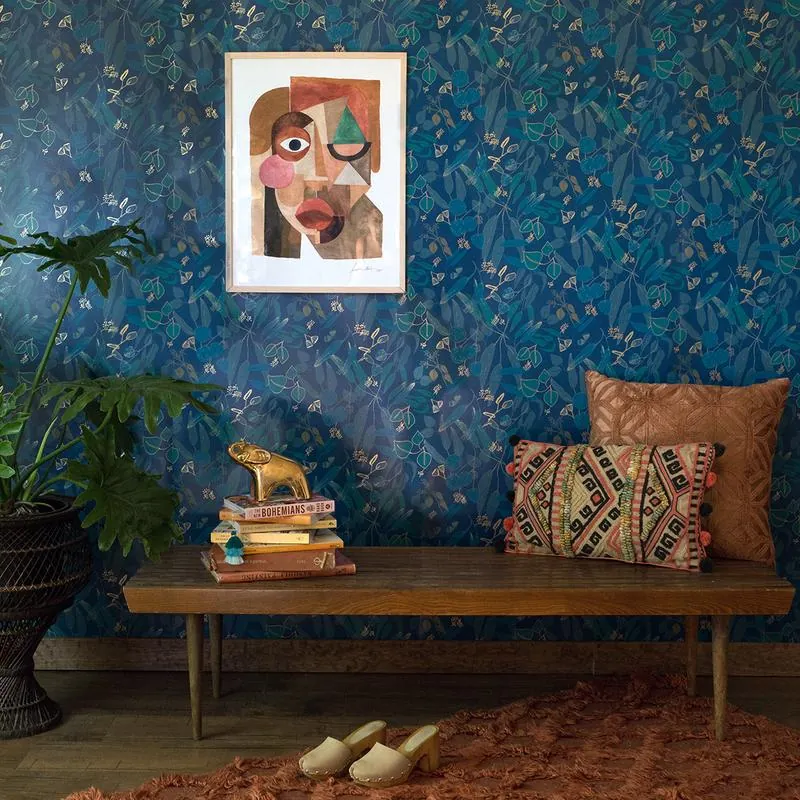
Contrast
The whole point of pattern mixing is to get variety in a design, and contrast is a great principle to help you do it right. Contrast comes into design in lots of ways: you can contrast color, scale, shape, pattern type, value, and more.
When you’re mixing patterns, it helps to think of one element to contrast and then maintain cohesiveness with the others. For example, if you use patterns with contrasting colors, you might want to tone down the contrast in scale, intensity, shape, etc. And if you’re pairing a bold floral with a checkerboard pattern, keeping to a color palette will prevent your design from getting too hectic.
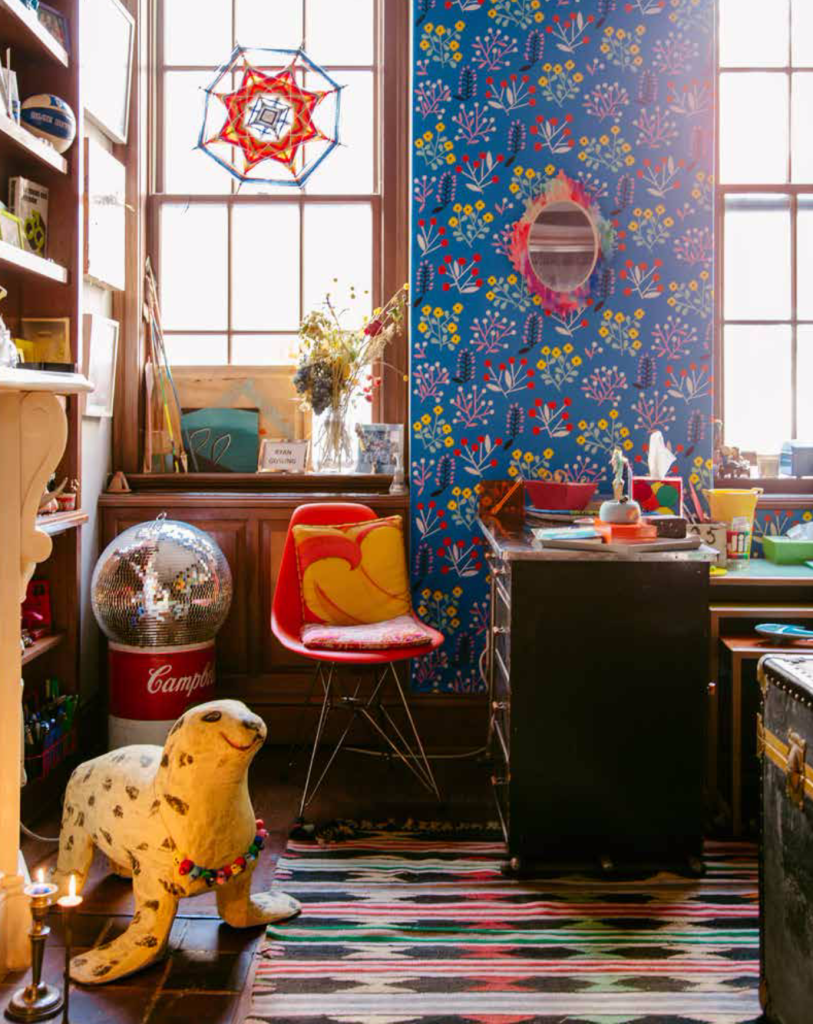
Mood
Another consideration in pattern mixing is mood. If you mix a zany zig zag with a delicate calico, you might experience some design whiplash. The moods are just very different. Instead, think of an overall mood that you want your design to have, then choose patterns that contribute to that mood.
Know When to Pull Back
I have a distinct childhood memory of a crafting session with my grandma when she said “Every artist needs someone to bonk them on the head with a hammer when the work is done so that they’ll finally put down the paintbrush.” Now that I think of it, I wonder what kind of chaos I was crafting with her to make her say that! Of course, my grandmother is a lovely person and would never actually condone violence. Still, the idea that you need to know when to pull back holds up.
A big part of pattern mixing all design is stepping back, evaluating, and modifying your work. It might feel discouraging to undo some of your work if you realize that it’s too overwhelming or not quite right. I know, because I’ve been there. But you’ll be so much happier with your work if you let yourself evaluate honestly and remember some restraint.
With that being said, design is subjective and you’re the master of your own destiny! What is absolutely too much for designer might become another designer’s signature style. Design rules are meant to be broken, so once you’re confident with some pattern mixing basics go wild!
Finding Great Patterns
Like I mentioned before, Spoonflower is a great place to find wallpaper, fabric, and even housewares with beautiful patterns made by independent designers. Spoonflower is my go-to for interior design patterns and fun fabric. We’ve really worked with them so many times and we’re always thrilled with the variety and quality of their products.
You can check out some of our favorite Spoonflower designers here, and keep your eyes peeled for some Lars Spoonflower projects coming up soon. 😉
For more pattern inspiration don’t forget to follow my Patterns board on Pinterest! And another designer I love (who’s a pattern-mixing genius) is my dear friend Meta Coleman, who is designing our house. Lucky me!
A few years ago I wrote another pattern mixing guide! You can find it here, and combine your knowledge from both sources to become a pattern mixing pro.



